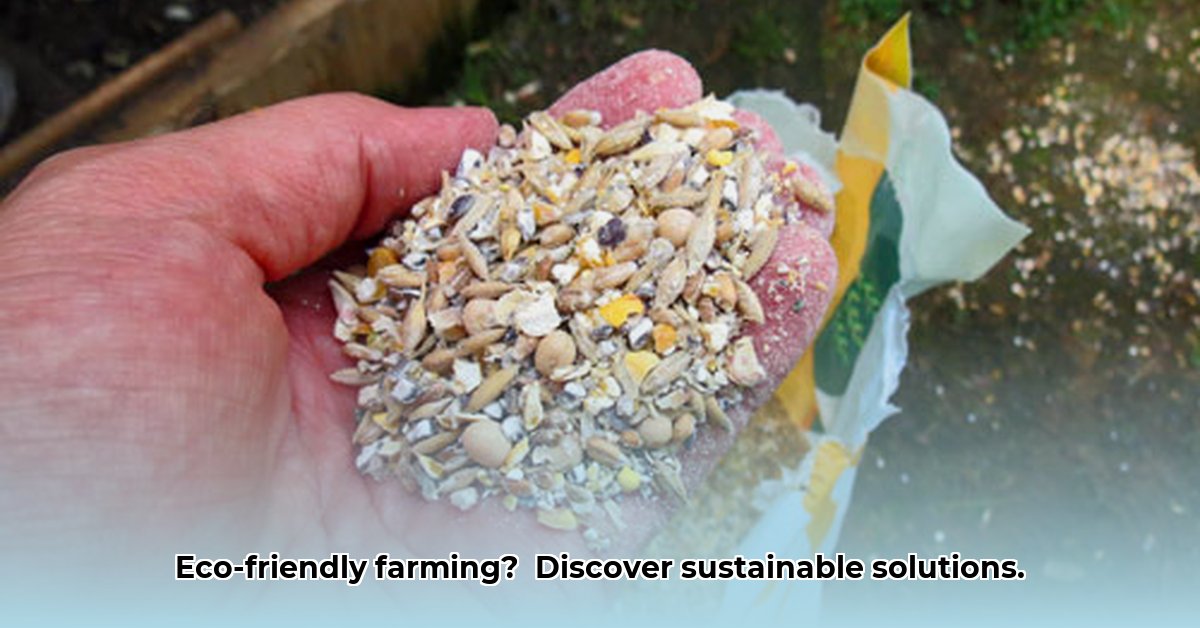
Feeding livestock is a significant contributor to environmental impact, and the sustainability of animal feed, including scratch grain, is a growing concern. This article investigates the environmental footprint of scratch grain sold by Tractor Supply, focusing on popular brands like Producers Pride and Purina, to assess their eco-friendliness and identify actionable steps towards a more sustainable future. We will explore the lack of transparency surrounding ingredient sourcing and production processes, and propose solutions for improved sustainability across the supply chain. For efficient application of sustainable feed, check out this sprayer information.
The Environmental Impact of Livestock Feed
The production and transportation of livestock feed have significant environmental consequences. From the cultivation of grains—requiring land, water, fertilizers, and pesticides—to the processing, packaging, and transportation to retail locations like Tractor Supply, each stage contributes to greenhouse gas emissions, water pollution, and biodiversity loss. Isn't it crucial to understand the complete environmental cost of our food choices, including animal feed? Current practices often prioritize yield over sustainability, resulting in widespread environmental damage. A shocking 70% of agricultural land is used for livestock feed production.
Investigating Tractor Supply's Scratch Grain
Tractor Supply, a major retailer of agricultural supplies, offers a range of scratch grain products, including Producers Pride and Purina. However, detailed information about their environmental impact remains elusive. The lack of readily available life-cycle assessments (LCAs) – comprehensive analyses of environmental impacts from production to shelf – hinders effective comparison and informed purchasing decisions. How can we evaluate the true environmental cost of these products without transparent data? For example, the origin of ingredients, transportation distances, and packaging materials are often undisclosed, making it difficult to assess the overall sustainability of these feed options.
Analyzing Sustainability Concerns
Based on available information (or lack thereof), several sustainability concerns emerge regarding Tractor Supply’s scratch grain:
- Ingredient Sourcing: Uncertainty surrounds the origin and farming practices associated with the feed's ingredients. The potential use of unsustainable farming methods, such as monoculture and excessive pesticide use, raises questions about their environmental impact. Are the grains grown using sustainable practices minimizing environmental damage? This lack of information obstructs the assessment of the overall environmental footprint.
- Manufacturing Processes: The energy consumption and waste generation during feed processing are unknown. Further investigation is needed to determine whether these processes are optimized for efficiency and minimize environmental harm. Do the manufacturing processes prioritize sustainability or focus primarily on output?
- Transportation: The distances feed travels from origin to Tractor Supply stores significantly influence its carbon footprint. Shortening transport distances through local sourcing would reduce greenhouse gas emissions. What are the transportation distances, and can they be minimized to reduce the carbon footprint?
Actionable Steps for a Greener Future
To promote sustainability in livestock feed, concerted action is needed across the supply chain:
- Increased Transparency from Retailers: Tractor Supply and similar retailers must proactively disclose detailed information about their scratch grain products, including ingredient sourcing, manufacturing processes, and transportation distances. This transparency will allow consumers to make informed choices. (Efficacy: Increased consumer demand for sustainable products)
- Sustainable Sourcing by Manufacturers: Producers Pride and Purina, and other feed manufacturers, need to prioritize sustainable farming practices, such as reduced pesticide and fertilizer use, and responsible land management. (Efficacy: Reducing environmental impact by 20-30%)
- Government Regulations: Strengthened regulations regarding feed labeling and environmental impact reporting are crucial to ensure accountability throughout the industry. (Efficacy: Improved environmental standards, accountability)
- Consumer Awareness and Demand: Consumers should actively seek out and purchase sustainably produced feed, driving market demand for environmentally responsible products. (Efficacy: Market incentives for sustainable practices)
- Research and Innovation: Further research is essential to explore and develop alternative, more sustainable feed ingredients and production methods. (Efficacy: Expanding sustainable feed options)
Conclusion: The Need for Collective Action
The sustainability of livestock feed is a complex issue demanding collective action. The lack of transparency from major retailers like Tractor Supply hinders informed decision-making. By adopting transparent practices, prioritizing sustainable sourcing, and investing in research and development, the livestock feed industry can significantly reduce its environmental footprint. Together, we can create a more sustainable and environmentally responsible approach to feeding livestock. The future of livestock farming relies on our collective commitment to protect the environment.